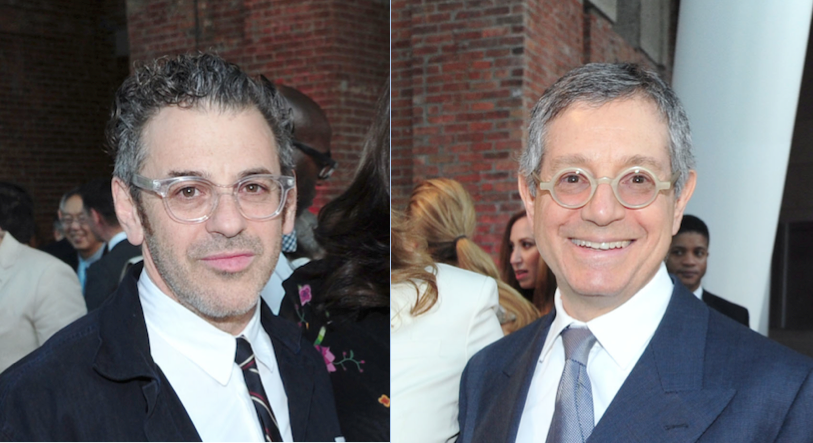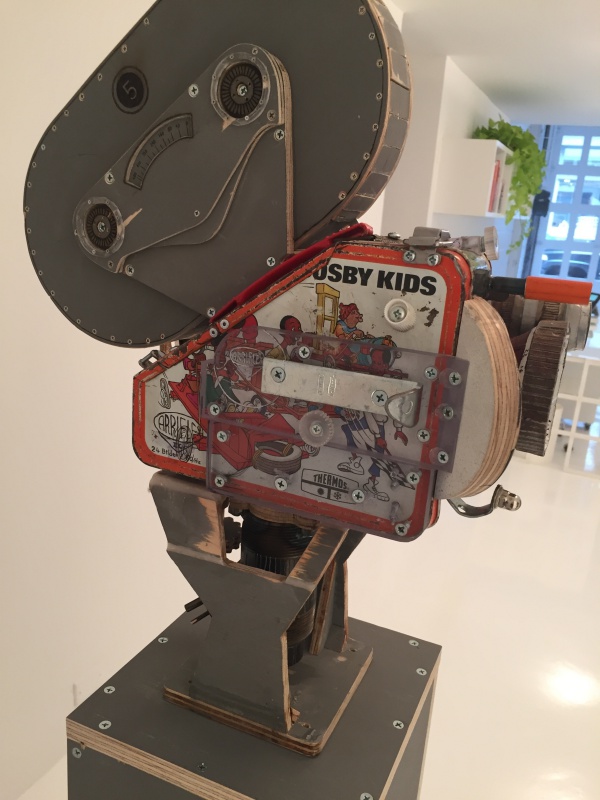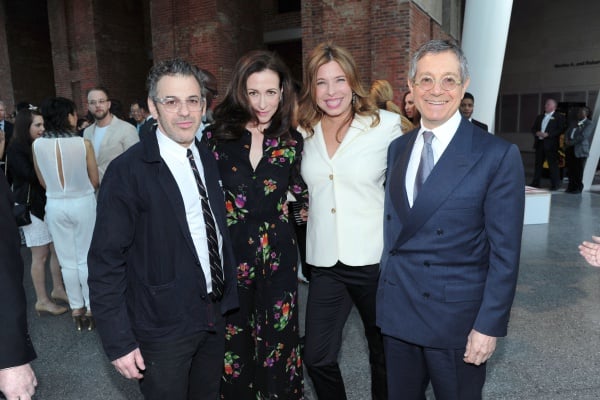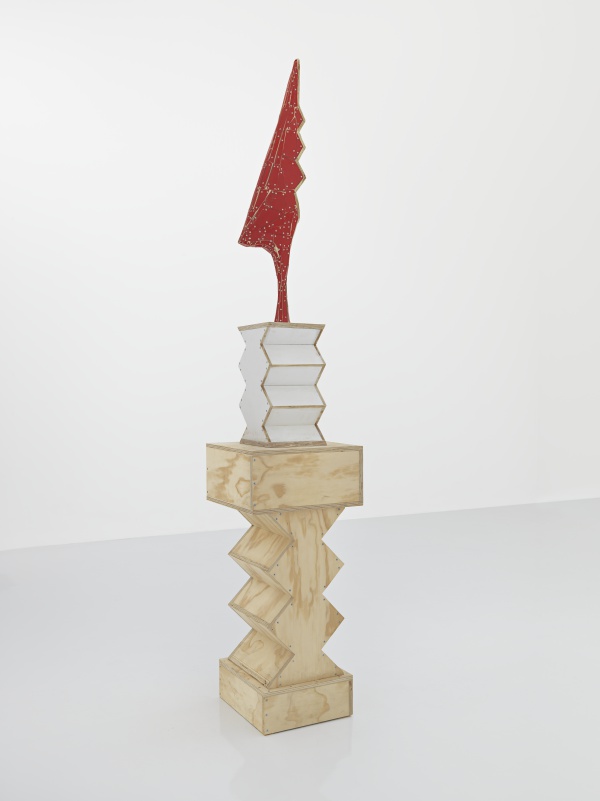Art & Exhibitions
For Tom Sachs and Jeffrey Deitch the Time Is Finally Right
Sachs says he's proud to be part of this next chapter in Deitch’s life.

Sachs says he's proud to be part of this next chapter in Deitch’s life.

Laura van Straaten


Tom Sachs, Since We Are All Driven By Emotions, Our Belief That We Might Be Governed by Rational Thought Is But A Vain Illusion (2015). Image: Laura van Straaten for artnet News
“I called him yesterday because I was having meltdown about pedestals,” Tom Sachs said about Jeffrey Deitch. “It was 11th-hour formal concerns.”
These concerns were related to “Nuggets,” Sachs’s show that opened Thursday night at Deitch’s gallery space at 76 Grand Street. And though this is the first solo show of Sachs’s work at that gallery, Sachs and Deitch are no strangers.
“Jeffrey and I have been friends for 20 years,” Sachs told artnet News. “We’ve done a little bit of work together but we’ve never found the right time for either of us. It’s never lined up, for external reasons. And the timing was right.”
Sachs and I were sitting in the Brooklyn Museum’s café last week discussing the Deitch gallery show and two other current shows: “Boombox Retrospective: 1999-2016,” which runs through August 14 at that museum, and “Tea Ceremony” which runs through July 24 at the Noguchi Museum.
In his first-person announcement about the Sachs show (a compelling read in its own right), Deitch was effusive about the artist and explained one of the artist’s early career shenanigans.
“Tom amused himself by setting up a contest between three art dealers who were keen to show his work, Angela Westwater, Mary Boone, and myself,” wrote Deitch. “He even published a zine about the ‘competition.’”

Tom Sachs, Since We Are All Driven By Emotions, Our Belief That We Might Be Governed by Rational Thought Is But A Vain Illusion (2015) (detail). Image: Laura van Straaten for artnet News
Sachs is equally admiring of Deitch. “He’s got that rare combination of being interested in business and making things happen,” he said, “but also being very interested in art ideas and being enthusiastic about them.”
After all these years, why did Sachs choose to show with Deitch? And why now?
“I really feel like Jeffrey’s in the top two or three most important people in the art world,” said Sachs.
In addition to Deitch, Sachs works with Sperone Westwater and Gagosian in New York, and in Europe he works exclusively with Thaddaeus Ropac.
When asked which was his main New York gallery, he said, “They are different people for different things.” He added, “Right now, this show is all about Deitch.” He did, however, express an interest in working with only one gallery, but said it hasn’t panned out that way. “Ever since Tom Healy and Paul Morris [of Morris-Healy Gallery in Chelsea] closed their doors,” he said, “I’ve never had, like, one person.”
The title of the Deitch show originates in the size of the sculptures themselves—works that are “no bigger than a breadbox,” per Sachs. And all but two of the dozen artworks on view were created for this exhibition, of which we were given a sneak peek earlier this week. In his announcement, Deitch singled out as his favorite work in the show the photocopy machine Sachs has recreated in plywood, which is the primary material used to create all the works on view.
Another standout in the show is the vintage Arriflex film camera Sachs has deftly fabricated out of wood and a 1970s “Fat Albert and the Cosby Kids” lunchbox.

Tom Sachs, guest, Anne Pasternak, and Jeffrey Deitch at the 2016 Brooklyn Museum Artist Ball, which coincided with the opening of Sachs’s retrospective. Courtesy of Patrick McMullan.
In seeing the “Nuggets” exhibit and remembering Deitch’s comment that Sachs’s works are made with a combination of “industrial rigor and hand-made artistry that have become his trademark,” it’s hard not to think of the Metropolitan Museum of Art’s new exhibition “Manus x Machina” at the Costume Institute, which mines some of the same terrain but in the field of fashion.
Back to that 11th-hour meltdown, Sachs says that he and Deitch both hate walking into a sculpture exhibition and seeing “a big room of white pedestals,” especially when the pedestals are bigger than the works themselves.
“It’s a thing we just have to suck up and deal with in a museum but that’s why so many artists now put sculptures on the ground,” Sachs said. “Or someone like Brancusi made the pedestals.” His Brancusi reference isn’t a casual one. For the Deitch show, Sachs has re-made in plywood the Brancusi masterpiece Le Coq. A version of Brancusi’s work was, as early as 1924, shown in walnut, but it is best known for the bronze and marble iterations done in the 1930s. (Apparently, Sachs is such a fan of the Romanian-French sculptor that the doorbell to Sachs’s studio is marked “Brancusi.”)

Tom Sachs, Le Cock (2015). Image: Genevieve Hanson. Courtesy of Jeffrey Deitch and the artist’s studio
Ultimately, it seems Deitch mitigated the artist’s concerns about the pedestals. They’re all made in plywood and have the same rough-hewn quality—with their seams and screws showing—as Sachs’s sculptures.
Sachs’s show is in a space of the former Deitch Projects (the gallery was housed in two locations, one on Grand Street and the other at 18 Wooster Street, which is currently being leased to the Swiss Institute). Deitch Projects closed in 2010 when Deitch joined the Los Angeles’ Museum of Contemporary Art.
For Sachs, the Deitch space is a dream come true.
“When I first moved to New York, I went to every gallery and thought that was the most beautiful commercial exhibition space in the whole city,” Sachs says. “I still think that gallery is a gem and I have never done a show there.”
About his future with Deitch, and any potential representation by Deitch, Sachs said, “I’m happy that he’s back in New York doing what he does best…. I don’t know what will happen, but I’m proud to be part of this next chapter in Jeffrey’s life.”